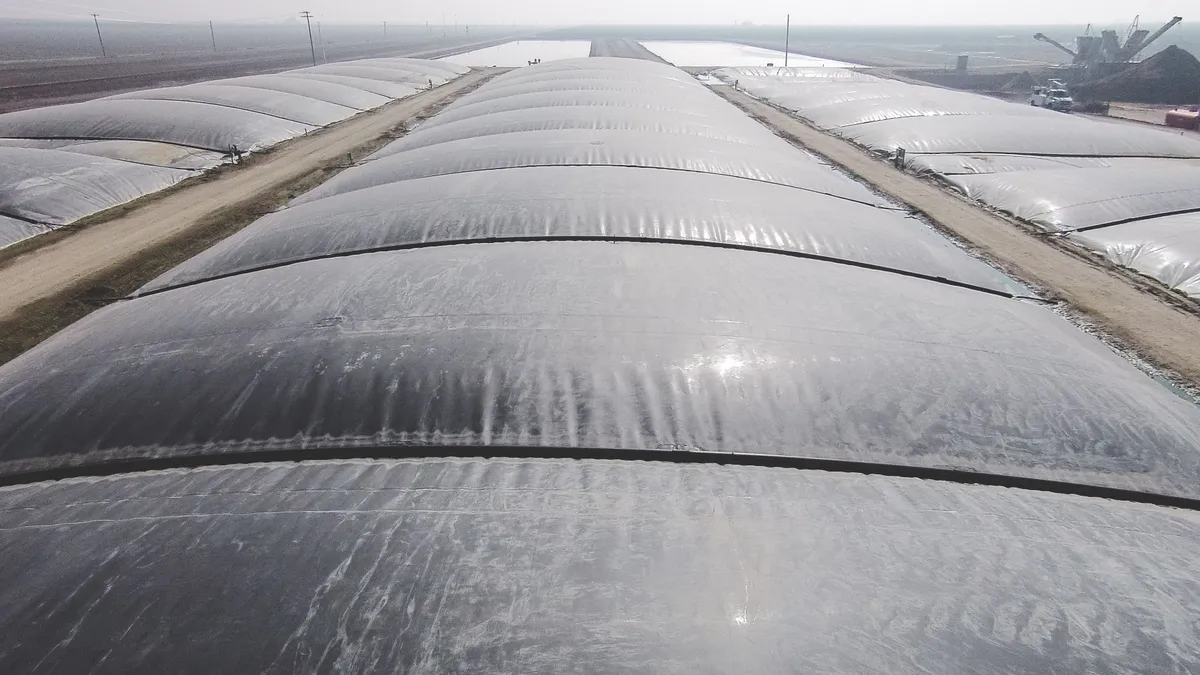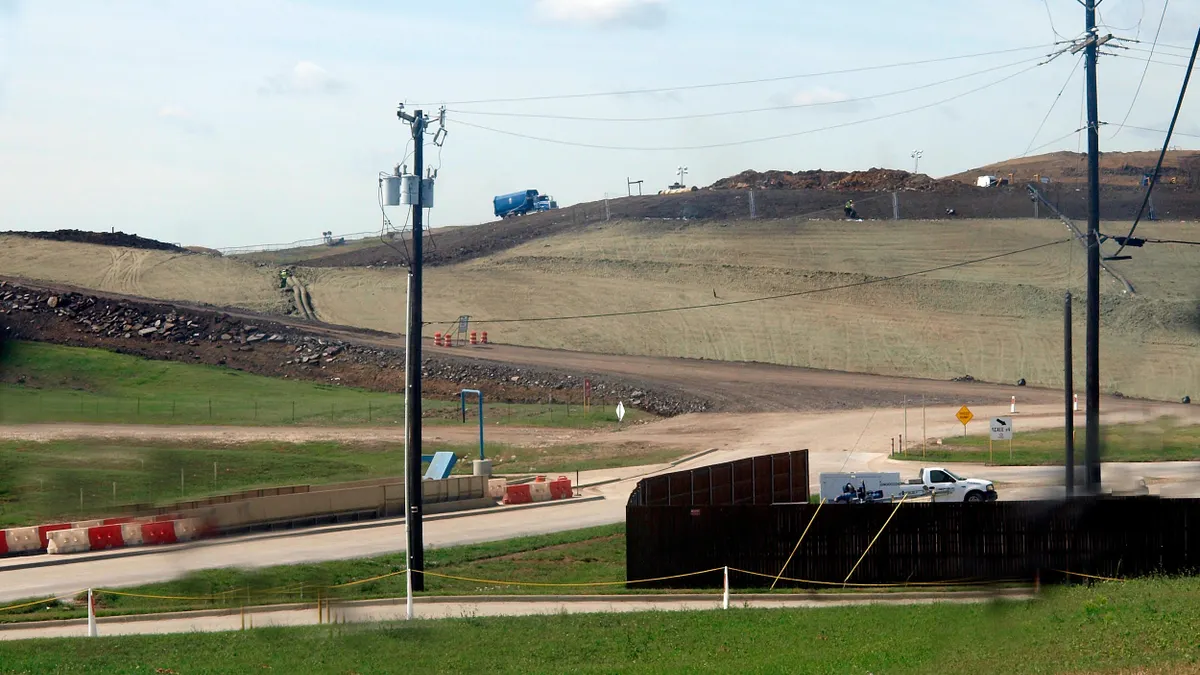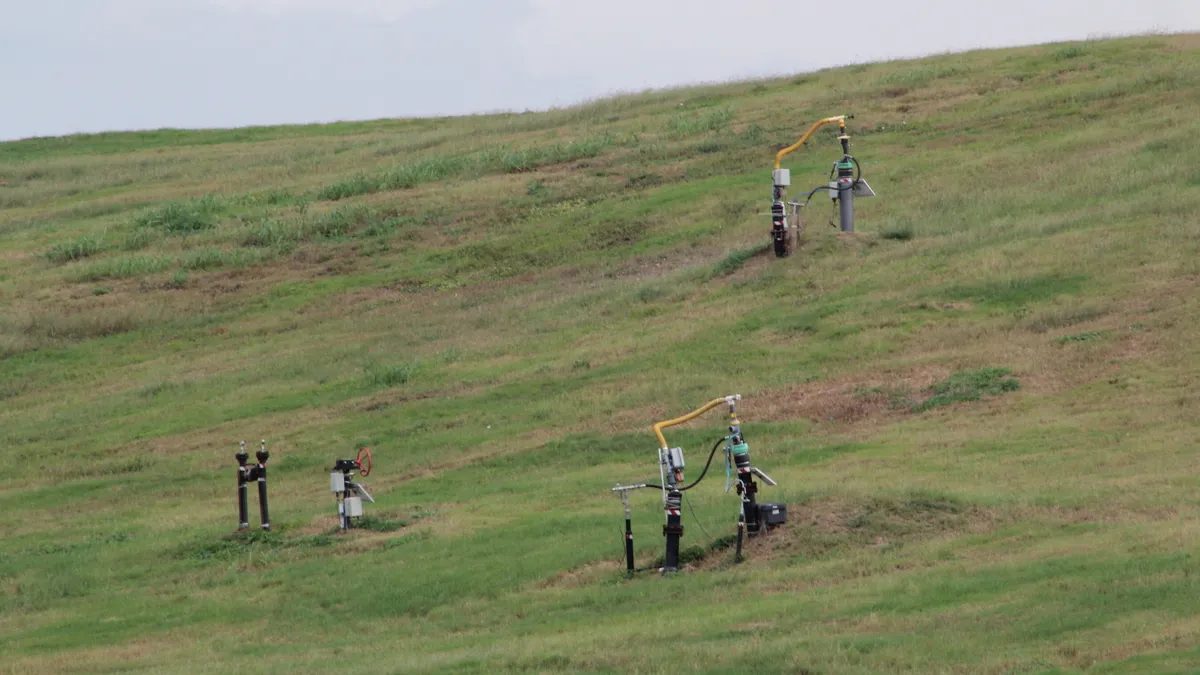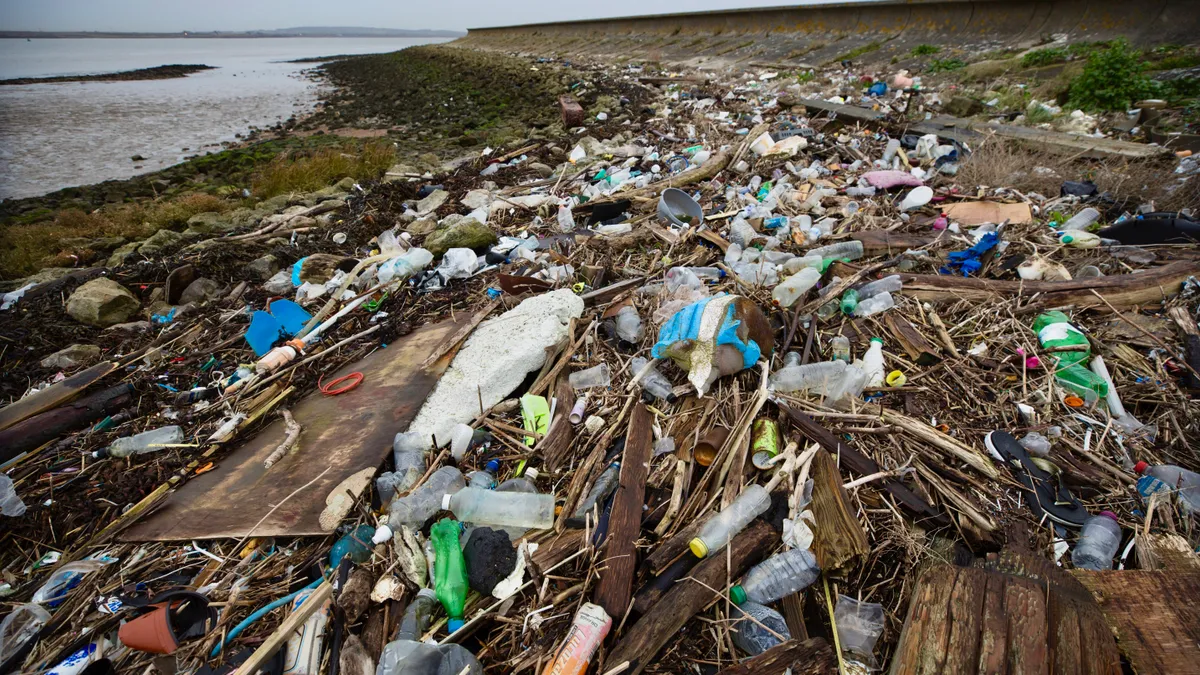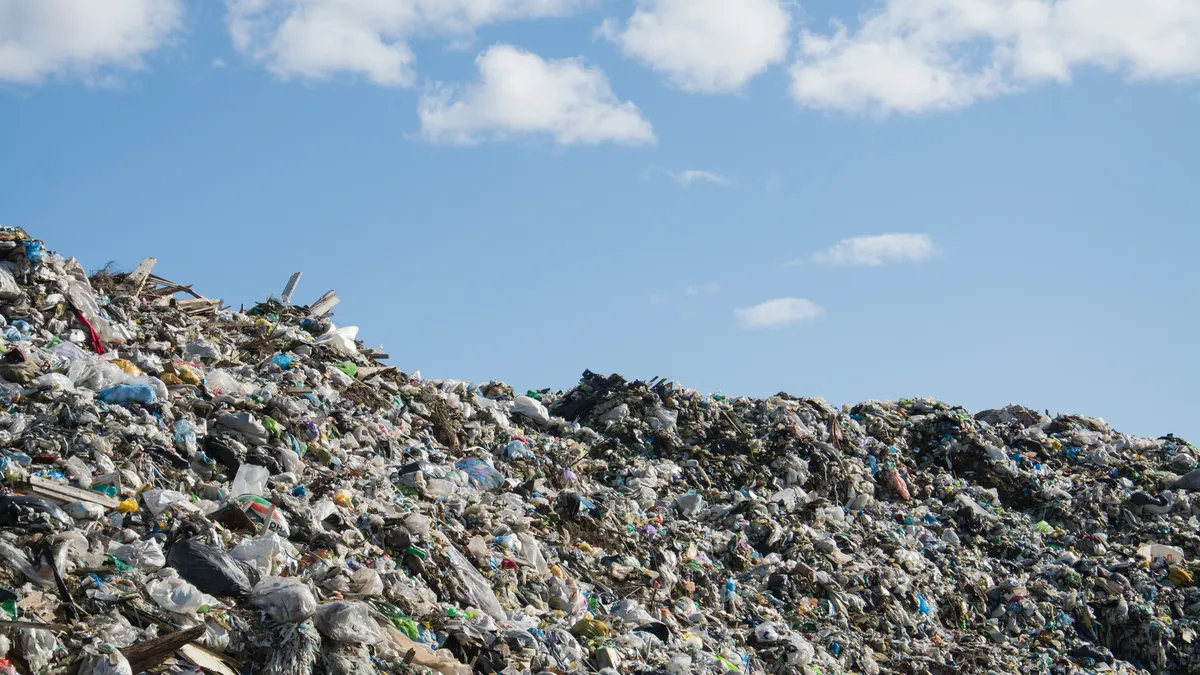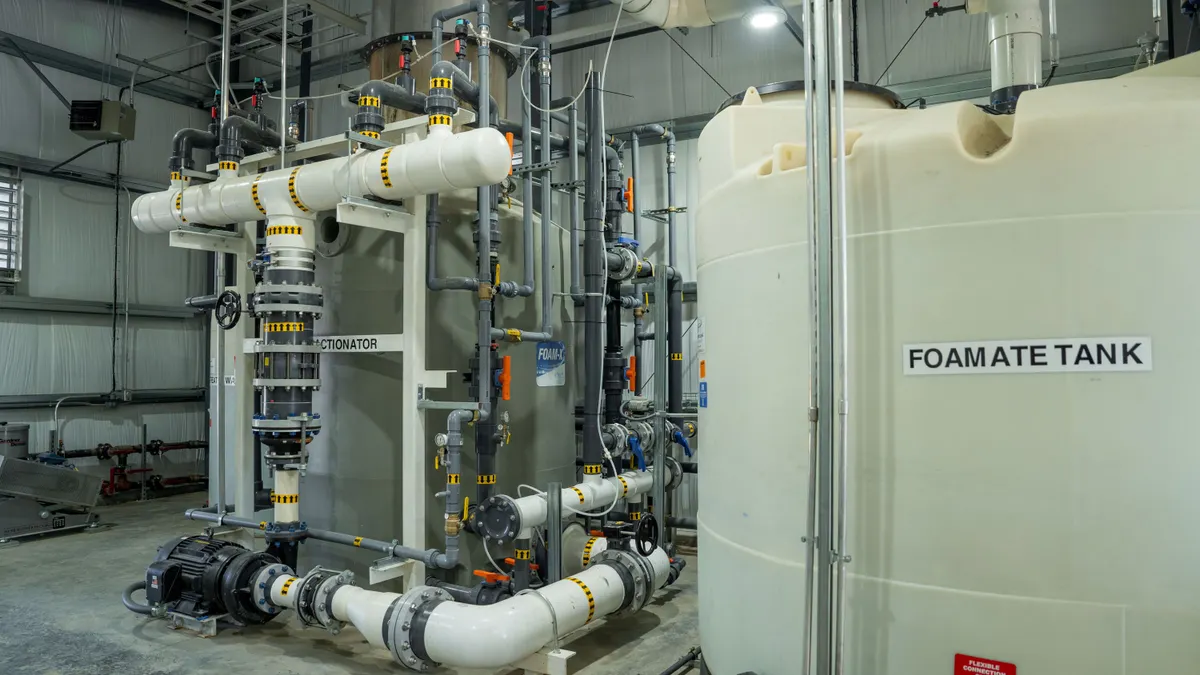This is the latest installment in Waste Dive’s ongoing RNG Roundup series. For prior stories, click here.
It’s been more than two years since the Inflation Reduction Act was signed into law, ushering in a wave of funding and tax credits that were expected to help decarbonize portions of the economy, including fuel production. But the biofuels industry is still waiting on guidance from the U.S. Treasury for several tax credits that could bolster a quickly growing sector — if they’re included at all.
The Clean Fuel Production Credit — also known by its tax code number, 45Z — is one. It would provide up to $1 per gallon of non-aviation fuel and $1.75 per gallon of aviation fuel, with the credit weighted toward fuels with the lowest greenhouse gas impact. Notably, the IRA made this credit technology-neutral, in contrast to previous tax credits that are targeted to specific kinds of fuels.
That open-ended approach has led to consternation for alternative fuel producers, including those working with methane from waste. They don’t know if renewable natural gas or similar fuels that can be created from waste facilities will qualify for the tax credit, and are waiting for the U.S. Treasury’ guidance to clarify one way or the other.
The tax credits technically became law once the IRA was signed. But Patrick Serfass, executive director of the American Biogas Council, said developers of biogas facilities will shy away from the credit until Treasury explicitly gives them the green light in its guidance, which is due by 2025.
“If you, as a business, claim this tax credit on your tax return and Treasury doesn't uphold that, that's a major risk,” Serfass said. “It would be much better if the guidance comes out. That's why people are waiting on it.”
Congress is also growing impatient over the credits. A bipartisan group of legislators sent a letter to Treasury Secretary Janet Yellen on July 30 urging the agency to release guidance ahead of its Jan. 1 deadline in order to ensure fuel producers have time to take advantage of the credits.
Several of those lawmakers, including Sen. Sherrod Brown, D-Ohio, and Sen. Roger Marshall, R-Kan., introduced a bill called the Farmer First Fuel Incentives Act, in the House and Senate in September. The bill would extend the 45Z tax credit’s eligibility period through 2034, out from 2027 under the present law, and would limit credit recipients to only domestic producers of alternative fuels.
Serfass said he was supportive of the lawmakers’ efforts, noting the tax credits could make up for slumping fuel credit prices that may be hampering growth.
“There's so much interest in building projects and getting work done,” Serfass said. “Would an additional credit on the fuel that you provide help push a bunch of projects over the starting and finishing line? Absolutely.”
FortisBC open to adding biogas capacity, per new request
Canadian utility FortisBC is seeking information from companies interested in supplying additional power capacity in British Columbia’s Southern Interior region, Bioenergy Insight reported. The response deadline for the request for expressions of interest is Nov. 4.
The utility currently owns four hydroelectric power generating facilities, and is open to adding biogas-derived energy and other kinds of energy as well. It’s pursuing a goal of adding up to 1,100 gigawatt-hours of capacity by 2030, compared to the 1,609 gigawatt-hours it currently supplies to customers annually.
The open-ended request is the latest instance of a utility company expressing interest in the biogas sector. Québécois utility Énergir has been active in the space, most recently by signing a 20-year RNG offtake agreement with Viridi Energy.
Opal Fuels sells IRA tax credits from facility for $11.1 million
Landfill gas developer Opal Fuels sold the tax credits it generated at a Michigan landfill to Apollo Global Management, it announced Sept. 18. The credits come from a project built at GFL Environmental’s Arbor Hills Landfill that was completed in June.
Opal received the credits because the project is producing a renewable fuel. This is is the first time that Opal has done so, but it won’t be the company’s last, co-CEO Adam Comora said in an interview. He said the company doesn’t need the extra credit on its taxes, and can instead use the cash it netted from the deal to invest in future projects.
Opal has nine landfill gas facilities operational today, with seven more under construction. It has an ongoing partnership to develop landfill gas infrastructure with GFL, and expects the second facility to come online through that partnership later this year. The company is also partnering with WM and South Jersey Industries, with plenty of room to grow, said Comora. Future projects will likely be able to generate additional credits that can be sold to interested buyers like Apollo.
“We do believe these tax credits will be available on the projects we're commissioning,” he said. “Our overall strategy would be to continue to do more of the same.”
WM breaks ground on landfill RNG facility in Nebraska
Construction is underway at WM’s Pheasant Point Landfill in Bennington, Nebraska, on a new RNG facility. The facility will be able to generate up to 1 million mmBtus of RNG annually once completed, enough to power up to 865 heavy duty natural gas vehicles daily, per a release from Douglas County. The facility is expected to begin operation in 2025.
WM expects to use the finished RNG in its trucks and sell the rest on the open market, 3 News Now reported. The facility will add to WM’s RNG portfolio, which it’s looking to expand to 20 operational facilities. The company also recently announced plans to move ahead with a landfill-gas-to-RNG facility in Alabama.
Divert strikes feedstock deal with Blue Diamond
Food waste company Divert announced a deal with Blue Diamond Growers on Sept. 17. Divert will receive almond processing byproducts at its Turlock, California, facility as part of the deal.
Divert broke ground on the Turlock facility in April 2023 and it remains under construction. When completed, it’s expected to take in up to 100,000 tons of wasted food per year, according to Divert. The Turlock facility was one of the first of the large anaerobic digestion facilities that Divert has announced. It has a goal to build 30 by 2031.








